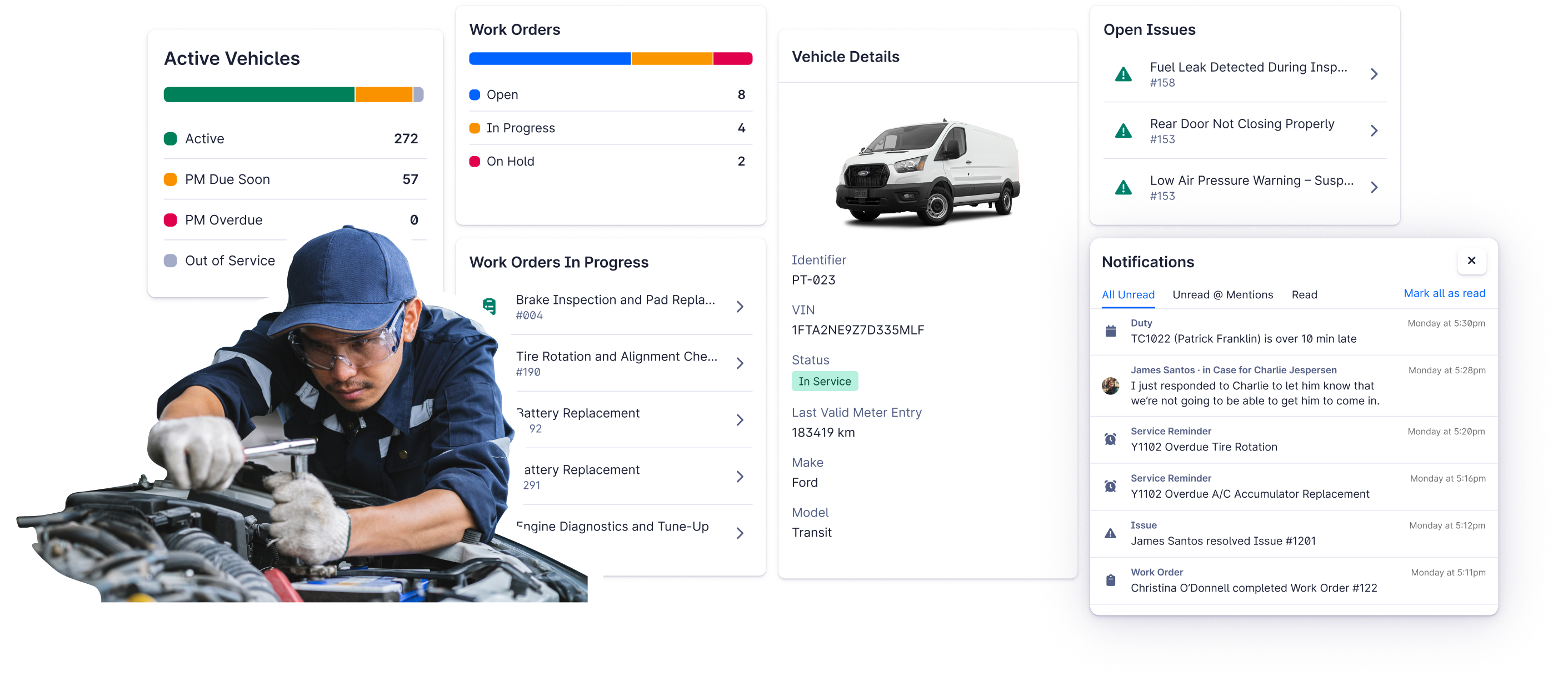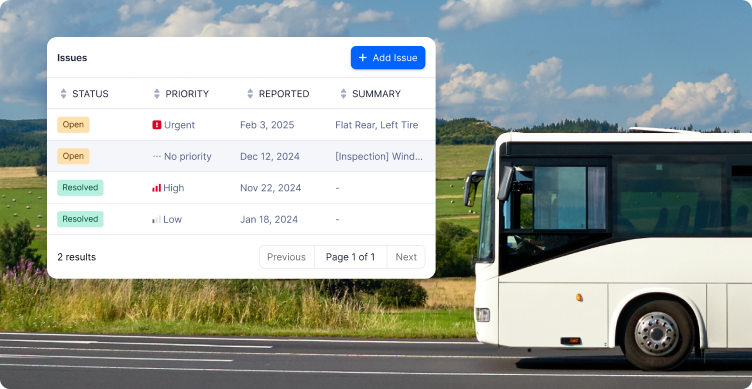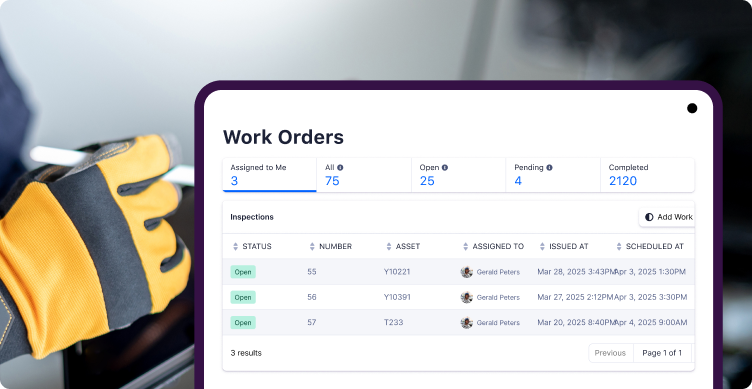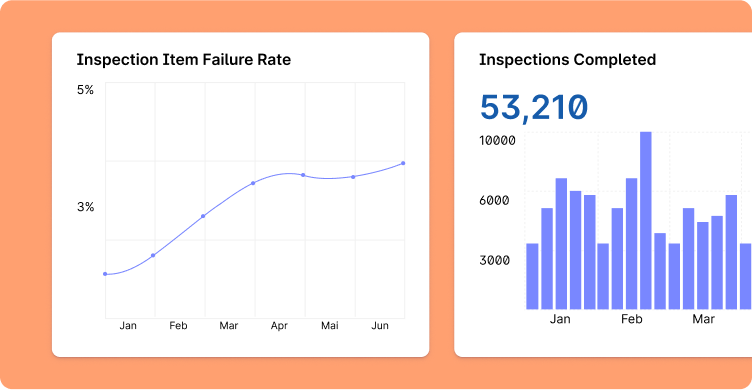- How long does it take to implement an enterprise asset management (EAM) system?
With Spare EAM, agencies typically see mechanics using the system within weeks, not months. For example, Gold Coast Transit District reached 100% mechanic adoption in just 30 days, saving two hours of daily paperwork. Because the platform is mobile-first and built for walk-up usability, mechanics can log inspections, update work orders, and track parts directly from a phone or tablet—without lengthy training or IT-heavy onboarding.
- Can an EAM system integrate maintenance with operations and dispatch?
Yes. A connected EAM platform like Spare EAM links garages directly to scheduling and dispatch. Inspection data, work orders, and asset health flow into daily operations in real time. If a vehicle fails a pre-trip inspection, dispatch can be notified immediately and runs can be rebalanced without last-minute disruptions. AI also helps schedule preventive maintenance around peak service windows. The result is better alignment between maintenance and operations, fewer road failures, and more reliable service for riders.
- Does EAM software only cover fleet maintenance, or can it manage other assets too?
Enterprise asset management goes beyond vehicles. Spare EAM supports the full lifecycle of transit and municipal assets—including facilities, equipment, fueling stations, and infrastructure. Agencies can track inspections, repairs, and service history for buses, paratransit vehicles, non-revenue vehicles, and garages in one system. By managing all assets holistically, agencies can extend asset lifecycles, reduce costs, and make better investment decisions across their operations.
- How does EAM software support FTA compliance and reporting?
Spare EAM was built with FTA compliance in mind. It automatically records inspections, work orders, and parts usage in an audit-ready digital log. Agencies can generate standardized reports in minutes instead of chasing spreadsheets or paper forms. With SOC 2 and HIPAA compliance for data security, plus AI copilots that flag repeat defects and automate custom reports, teams save time while meeting even the most complex reporting requirements.
- What’s the difference between reactive and preventive maintenance?
- Reactive maintenance means fixing equipment only after it breaks. This often leads to unplanned downtime, higher repair costs, and service disruptions.
- Preventive maintenance means servicing vehicles and assets on a regular schedule—based on mileage, engine hours, or time intervals. This approach reduces breakdowns, lowers repair costs, and improves overall reliability.
enterprise asset management
Predict issues. Prevent failures. Keep service moving.
Proactive maintenance that predicts issues, aligns garage and dispatch operations, and ensures every vehicle stays safe, efficient, and ready for service.
See it in action

Trusted by leading transit fleets









Stay service-ready with smarter maintenance workflows
Spot issues before they become failures. Spare's AI analyzes vehicle diagnostics, usage patterns, and maintenance history to flag risks early—so your fleet stays on the road and riders stay on schedule.
See Spare EAM in action
Keep riders moving with fewer disruptions
Vehicles stay service-ready, riders face fewer delays, and agencies avoid costly emergency repairs. Spare makes it possible by analyzing diagnostic data and usage patterns to schedule preventive work before breakdowns occur.

Automate the busywork: cut admin from hours to minutes
Re-entering data, scheduling preventive work, and preparing FTA/NTD reports eats up staff time. Spare automates it all—from bulk asset imports to audit-ready documentation.
Mechanics report saving 2+ hours of admin per day, giving them more time to focus on service.
Mechanics report saving 2+ hours of admin per day, giving them more time to focus on service.

Connect the garage to dispatch in real time
Legacy tools keep maintenance siloed, leaving dispatch blind to vehicle and asset status. With Spare, inspections, work orders, and repairs flow directly into operations. Vehicles are cleared faster, fewer trips are missed, and service reliability improves.
At GCTD, this connection increased vehicle availability by 15%.
At GCTD, this connection increased vehicle availability by 15%.
Read the case study

Stay audit-ready with FTA-compliant reporting
Spare is built for transit compliance. Generate FTA and NTD reports in minutes instead of days.
Our AI goes further—spotting recurring issues, predicting maintenance needs, and answering questions in plain language. Custom dashboards surface the details each team needs, with no third-party dependencies.
Our AI goes further—spotting recurring issues, predicting maintenance needs, and answering questions in plain language. Custom dashboards surface the details each team needs, with no third-party dependencies.

Go live in 30 days with a dedicated EAM rollout team
See results in weeks with an expert rollout tailored to transit operations. We handle onboarding, configuration and data migration so your team can focus on on service, not setup.
Want to learn more?
Let's talk


Everything you need to keep fleets road-ready
Digital Work Orders
Create, assign, and close repairs from any mobile device.
Pre & Post-Trip Inspections
Capture issues instantly and auto-generate work orders.
Preventive Maintenance
Predict failures and automatically schedule service around peak hours.
Parts & Inventory Tracking
Track stock, warranties, and shortages in real time.
Compliance Dashboards
Generate FTA/NTD reports and insights in minutes.
Integrations & Data
Pull in fuel card, GPS, and telematics data to analyze, act, and report.
FEATURED STORY
Customer stories

Proactive maintenance in action: GCTD improves fleet availability by 15% with Spare
Read the customer story
.png)
100%
Mechanic adoption in 39 days
20%
More inspections completed
2hrs
of daily admin eliminated
15%
Increase in vehicles available for service
Spare EAM in Action
“Our mission is to serve our community with dependable transit. But our old asset management system was holding us back—manual processes and scattered information made it hard to keep up with the demands of a growing region.
This is more than just new software—it’s a leap forward for how we serve our riders.”
—Ted Ross, Executive Director, GCTD
"Before Spare, I’d fill out forms by hand, and sometimes things got lost or entered wrong. Now, I can see the vehicle history right on my screen and update work orders on the spot. It makes my day a lot easier.”
—Sean Jackson, Lead Mechanic, GCTD
"I love the fact that the EAM tool does not let them start the bus until they’ve done the pre and post trip inspections. It’s not a step that can be skipped.
It’s streamlined and I appreciate that - you can’t just get in a vehicle and go.”
—Lacey Hernandez, Deputy Executive Director, GCTD
FAQ
- How long does it take to implement an enterprise asset management (EAM) system?
- Can an EAM system integrate maintenance with operations and dispatch?
- Does EAM software only cover fleet maintenance, or can it manage other assets too?
- How does EAM software support FTA compliance and reporting?
- What’s the difference between reactive and preventive maintenance?

.png)
.png)